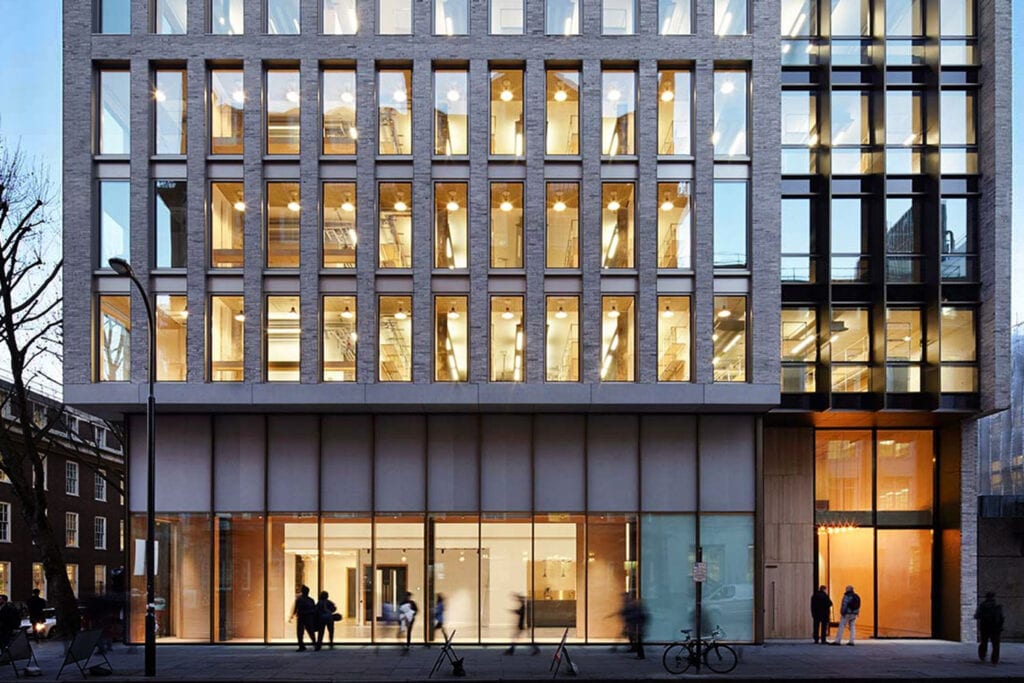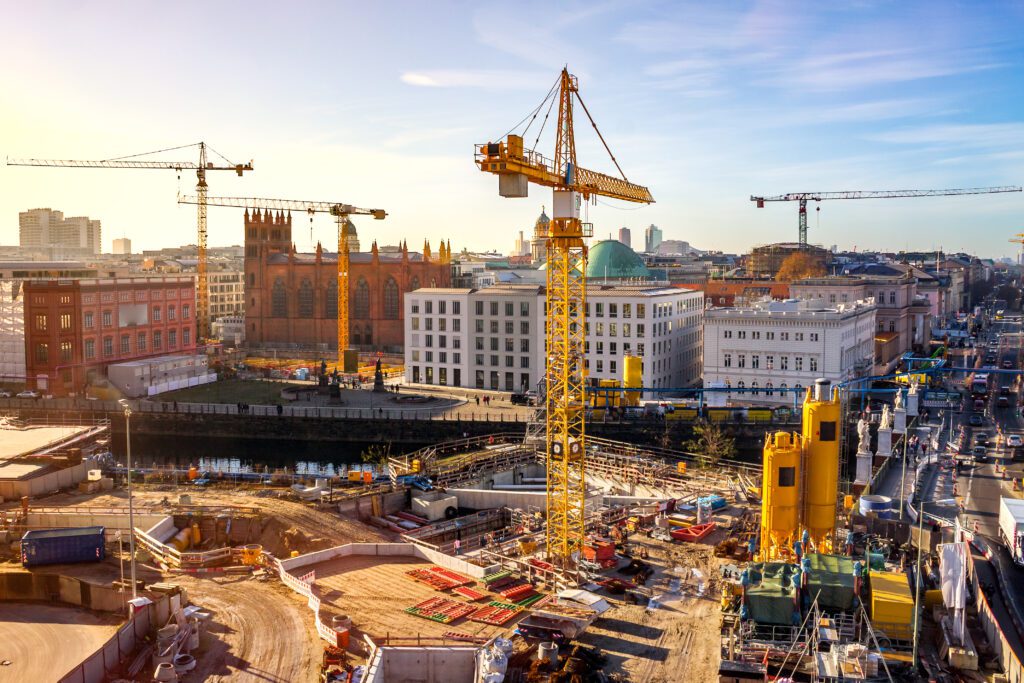The circular economy and the built environment
Circular economy principles are increasingly important within the built environment.
A circular economy that reduces waste, pollution and initial exploitation of natural resources, focusing on the recirculation of products and materials, can play a key role in creating a built environment where climate change and biodiversity loss is diminished and managed.
What is a circular economy and why is it important?
The principles of a circular economy, while they may differ slightly between different organisations, are largely consistent with using products and materials in a circular (not linear) way and reducing or eliminating waste and pollution. The Ellen MacArthur Foundation explains that a circular economy ‘tackles climate change and other global challenges like biodiversity loss, waste, and pollution, by decoupling economic activity from the consumption of finite resources.”
The approach of looking at the built environment through a circular economy lens is one that is gaining traction. As part of a suite of solutions that can support fighting the climate emergency, circular economy principles have power. It is up to those of us who have influence in this sphere to exert it to create positive outcomes for clients and for the planet.
The consideration of a material value chain in everything that we do is something that we’re now starting to translate to other teams, to find ways that fit in with the way that they approach their discipline expertise.
Joshua Apperley, climate emergency change manager, Buro Happold
Joshua Apperley is now climate emergency change manager at Buro Happold and previously worked in the waste management team on discovering circular economy opportunities in waste, and beyond.He said, “We increasingly look at the material life cycle of projects to find ways to reduce material consumption, improve capture of materials downstream and improve waste management techniques.
“The consideration of a material value chain in everything that we do is something that we’re now starting to translate to other teams, to find ways that fit in with the way that they approach their discipline expertise.
“It means looking for opportunities to help tenants to use less materials in their fit out, to help residents to better understand what they’re buying and what they’re throwing away, to increase recycling rates and to engage in community sharing activities. It also means considering reusing or repurposing parts and materials.
“Something important for me (and something that I often speak to clients and collaborators about) is really thinking about where things actually come from. Part of our job is to help people think about the end of the material timelines. That is: extraction and disposal.
“It’s about thinking about supply chain and ultimate impacts, pushing a bit beyond what clients might have thought about in the past, and putting systems in place to track the value of materials as they come to the end of their lives.”

What is driving adoption of a circular economy within the built environment?
The built environment sits at the forefront of efforts to reduce emissions, achieve net-zero and create a sustainable future for all. Building construction and demolition activities contributes twice as much waste as all consumer municipal waste in the US. More broadly, the building and construction industry creates many of the emissions that are proving so damaging to the planet, so we must be – and can be – part of the solution.
Another driver is stakeholder expectations. Consumers, employers and stakeholders increasingly expect companies to act – and in as many forms as possible. Working within a circular economy framework is likely to meet these expectations. This can also apply to clients too; while not all players within built environment projects will want to think about a circular economy, for many it is within their line of sight.
Within the built environment, there is an appreciation of how things can be done better and more efficiently, and the circular economy is a good framework to use for projects.”
Roger Savage, director, city consulting, Buro Happold
Roger Savage is director, city consulting, at Buro Happold. He said, “There is an awareness of the circular economy with clients – and it is building. There are largely two approaches; one is to see it as part of work they are doing around net zero and climate risk specifically, while another is seeing the bigger picture across their business and part of a shift of in how they operate.
“Within the built environment, there is an appreciation of how things can be done better and more efficiently, how materials can better be resourced and the whole life cycle of a project – and the circular economy is a good framework to use for projects.”
Transdisciplinary work
In 2023, Buro Happold concluded an internal project to identify opportunities to apply circular economy practices across the practice. This is an opportunity for us to consider where we can grow and the advantages of the circular economy we can offer to our clients.
This idea of transdisciplinary work is a critical one to understand. Skills and services at Buro Happold cross an extremely wide range of specialisms and sectors, so clients know that they won’t be limited to one single area.
This principle applies to work in the circular economy too; it doesn’t have to apply only in waste management, but in many diverse applications and offerings. This breadth of expertise helps to address the variety of potential hurdles or “what ifs” that may arise and would otherwise stunt opportunities for reuse.
Roger Savage said, “Certainly, a lot of circular economy principles are interdisciplinary; it’s about how different resource flows link together and identifying wins in multiple areas.
“From a city perspective, we pay particular attention to the ‘economy’ part of the circular economy, integrating different systems together and examining the business case for taking action. Our approach is looking at economic systems. With analysis and modelling we can look at aspects like waste materials, energy, water and greenhouse gas emissions across different economic sectors.
“When we see where the biggest impacts are, we are able to look at the place, business or organisation to see what could be changed or what the alternatives are. Our work is often at a national scale, including policy and regulatory frameworks as well as large scale interventions.
“All these issues are interlinked, and I see great value in transdisciplinary working. For Buro Happold, the magic and differentiator is bringing multiple elements of expertise together. We are able to navigate the multiple factors that are needed to create ecosystems for a circular economy to be effective.”

A wider sustainability picture
The circular economy is not simply about waste management (although, waste considerations do naturally form a large and important part of it.). Within the built environment, circular economy principles can be found in many sectors. Indeed, the circular economy can be considered as one of the building blocks of the wider sustainability picture – and not just in terms of reducing waste.
Using circular economy principles, we have a chance to make a difference beyond ‘just’ carbon considerations. Kirsten Melling, an associate sustainability consultant at Buro Happold in Chicago, explains how conversations with clients can take a more holistic view of sustainability when bringing in circular economy principles.
She said, “A lot of sectors are really focused – understandably – on carbon emissions. It is our job to help them think about “carbon- and”. Carbon and what else? That ‘and’ aspect is about the additional actions we can take to support decarbonisation. An approach that considers a circular economy is a part of that.
“From my team’s point of view, we are excited about the chance to look at some great US entry points that are unique to Buro Happold when it comes to circularity and taking the conversation beyond carbon emissions into sustainable design and construction.
“While these discussions start with zero waste and diverting waste streams on the operations side – because that is something that is visible and more practical to engage with – it is important to look with a wider lens at circularity.”
It is our job to help clients think about “carbon- and”. Carbon and what else? That ‘and’ aspect is about the additional actions we can take to support decarbonisation. An approach that considers a circular economy is a part of that.
Kirsten Melling, associate sustainability consultant, Buro Happold
Making it easy
It is part of the responsibility of built environment professionals to support clients in making decisions that are right for them. When that is underpinned with appropriate economic and sustainability considerations, the outcome is better for everyone involved. Ensuring that circular economy actions and choices are simple, desirable and attractive is an important part of encouraging individuals and organisations to choose them.
Kirsten Melling said, “I feel we need to make these actions so desirable that we can’t help but want to do it. That has been a positive mental shift for me; it is less about convincing companies to take less ‘bad’ action and more about regenerative and circular work that will have such a positive effect.”
Learn more about Buro Happold’s services within a circular economy here.





